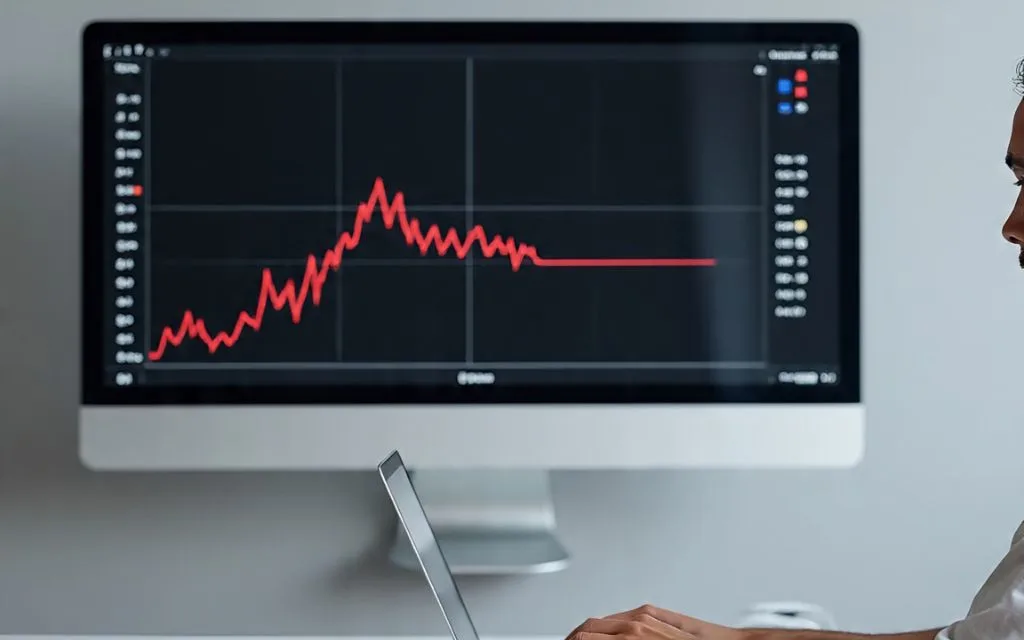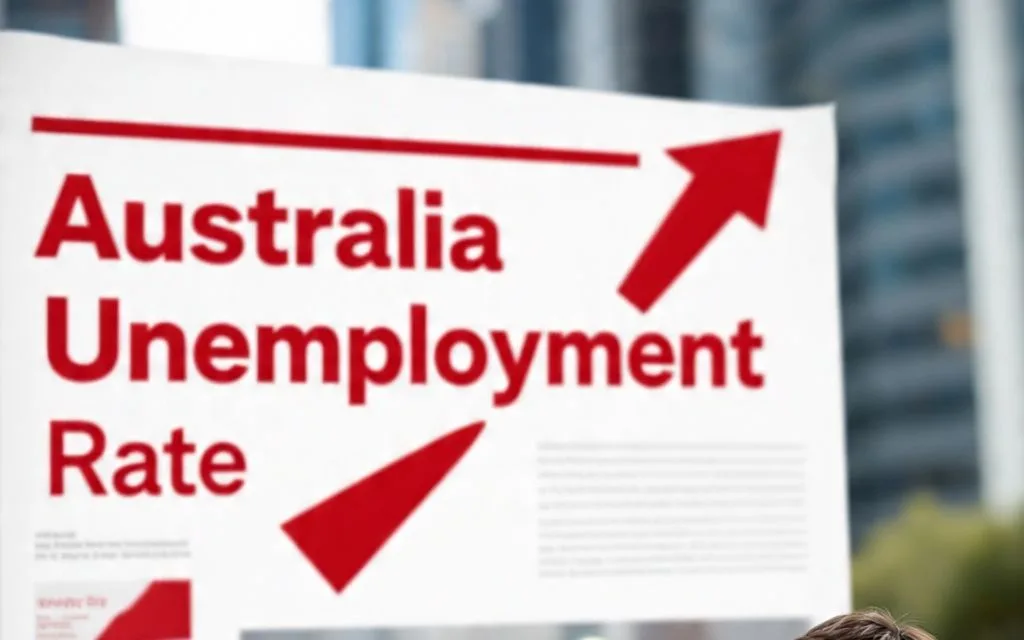The Australia unemployment rate has become a major topic of discussion in 2025, especially after it rose from 4.1 percent in May to 4.3 percent in June. This sudden increase in the Australia unemployment rate has caught the attention of economists, policymakers, and everyday Australians. It also comes shortly after the Reserve Bank of Australia surprised markets by keeping interest rates on hold.
In this article, we will provide a complete overview of the Australia unemployment rate, why it is rising, and how it affects the broader economy. We will also discuss the role of part-time jobs, youth unemployment, and labour force participation.
Understanding the Current Australia Unemployment Rate
The Australia unemployment rate measures the percentage of people in the labour force who are actively looking for work but cannot find a job. According to the Australian Bureau of Statistics, the Australia unemployment rate rose sharply in June 2025. Employment increased by just 2,000 people, while the number of officially unemployed Australians grew by 33,600.
Because both employment and unemployment increased, the overall size of the labour force expanded by 35,600 people. This led to a small rise in the participation rate from 67 percent to 67.1 percent, which is very close to the all-time high of 67.2 percent recorded in January.
Despite the higher participation rate, the rise in the Australia unemployment rate suggests there are challenges in the job market that need attention.
Why Did the Australia Unemployment Rate Rise?
Several factors contributed to the recent increase in the Australia unemployment rate:
- Shift from Full-Time to Part-Time Jobs: In June, part-time employment grew by 40,000 people, while full-time employment fell by 38,000. This shift has resulted in fewer total working hours across the economy, which often leads to a rise in underemployment and slack in the labour market.
- Youth Unemployment: Youth unemployment, referring to Australians aged 15 to 24 years, surged from 9.5 percent to 10.4 percent in June. This is the highest youth unemployment rate since November 2021. High youth unemployment is a major contributor to the rise in the Australia unemployment rate.
- Economic Uncertainty: Global economic factors, including trade tensions and slowdowns in major economies, have made Australian businesses cautious about hiring. Although Australia is not directly affected by recent tariffs imposed by other countries, the global uncertainty is impacting business investment decisions.
Reserve Bank’s Decision and Its Impact on the Australia Unemployment Rate
The Reserve Bank of Australia (RBA) recently chose to keep interest rates on hold, surprising many market analysts. According to Abhijit Surya, a senior Asia-Pacific economist at Capital Economics, this decision may have been a policy error. He believes that the sharp rise in the Australia unemployment rate highlights the need for the RBA to reconsider its current stance.
Lower interest rates typically stimulate economic growth by encouraging spending and investment. However, by keeping rates steady, the RBA risks slowing job creation, which could cause the Australia unemployment rate to rise further.
Economists like Harry Murphy Cruise from Oxford Economics Australia suggest that the RBA should consider rate cuts soon to avoid further deterioration in the labour market.
Part-Time vs Full-Time Employment Trends in Australia
The shift from full-time to part-time employment is an important reason why the Australia unemployment rate rose in June. While part-time work provides flexibility, it often leads to lower incomes and less job security.
Here are some key points:
- Part-Time Jobs Increased: The Australian economy added 40,000 part-time jobs in June.
- Full-Time Jobs Decreased: Full-time employment fell by 38,000 positions.
- Underemployment Rate Rose: With more people working part-time who want full-time jobs, the underemployment rate also increased.
This trend reflects structural changes in the labour market. Many businesses prefer hiring part-time workers to reduce costs, but this shift can hurt overall economic stability and lead to a higher Australia unemployment rate over time.

Youth Unemployment and Its Role in the Australia Unemployment Rate
One of the most concerning aspects of the current data is the rise in youth unemployment. The youth jobless rate increased from 9.5 percent to 10.4 percent in June, the highest level since late 2021.
High youth unemployment contributes significantly to the Australia unemployment rate and presents long-term risks. Young Australians who cannot find jobs may delay starting careers, saving for homes, or contributing to the economy. Prolonged unemployment can also lead to skill loss and lower lifetime earnings.
Labour Force Participation and Employment-to-Population Ratio
Despite the rise in the Australia unemployment rate, the national employment-to-population ratio remained stable at 64.2 percent. This means that 64.2 percent of the working-age population is employed, which is a positive sign.
The participation rate, which measures the percentage of people either working or actively looking for work, rose slightly from 67 percent to 67.1 percent. This suggests that more Australians are entering or staying in the workforce, even if they are struggling to find full-time jobs.
Global Factors Affecting the Australia Unemployment Rate
Global economic uncertainty is also playing a role in the rising Australia unemployment rate. Trade tensions, such as tariffs imposed by President Trump, are affecting business investment decisions worldwide.
While Australian businesses are not directly involved in these tariff disputes, the global slowdown is making companies hesitant to expand or hire new workers. This hesitation is putting pressure on the Australian job market and contributing to the higher Australia unemployment rate.
Interest Rate Cuts on the Horizon?
David Bassanese, chief economist at Betashares, believes it may be too soon to conclude that employment growth is slowing in a significant way. However, he agrees that the latest data gives the RBA more flexibility to cut rates in the coming months, even if inflation is slightly higher than expected.
If the RBA decides to cut interest rates, it could help reduce the Australia unemployment rate by stimulating business investment and consumer spending. Lower borrowing costs usually encourage companies to hire more workers and invest in growth.
Future Outlook for the Australia Unemployment Rate
Looking ahead, the outlook for the Australia unemployment rate is uncertain. There are both risks and opportunities:
Risks:
- Global Economic Slowdown: If international trade tensions continue, Australia could face reduced demand for exports, leading to job losses.
- Shift to Part-Time Work: Continued reliance on part-time employment could increase underemployment and push up the Australia unemployment rate.
- Youth Joblessness: Rising youth unemployment could create long-term challenges for the Australian economy.
Opportunities:
- Potential Interest Rate Cuts: If the RBA lowers interest rates, it could help stimulate hiring and reduce the Australia unemployment rate.
- Government Job Programs: Increased investment in public infrastructure or job training programs could create new employment opportunities.
- Labour Market Resilience: Despite the recent rise in the Australia unemployment rate, strong hiring intentions and reported labour shortages in some sectors suggest the market still has underlying strength.
What Can Be Done to Address the Australia Unemployment Rate?
Policymakers and businesses need to take action to manage the Australia unemployment rate and avoid a prolonged rise in joblessness. Here are some possible solutions:
- Monetary Policy Adjustments: The Reserve Bank should consider cutting interest rates to stimulate job growth.
- Government Investment: Increased spending on infrastructure projects can create jobs across various sectors.
- Youth Employment Programs: Special initiatives to help young people enter the workforce can reduce youth unemployment and lower the overall Australia unemployment rate.
- Support for Small Businesses: Encouraging small business growth through tax incentives or grants can lead to new job creation.
Conclusion: Understanding the Australia Unemployment Rate in 2025
The recent increase in the Australia unemployment rate to 4.3 percent highlights the complexity of the current labour market. Factors such as the shift from full-time to part-time work, rising youth unemployment, and global economic uncertainty are all playing a role.
While the participation rate and employment-to-population ratio remain stable, the growing number of unemployed Australians is a sign that more needs to be done to support the labour market. The Reserve Bank, government policymakers, and businesses must work together to address the challenges behind the Australia unemployment rate.
By staying informed and making proactive decisions, Australia can navigate this period of economic change and create a more secure future for its workforce.






